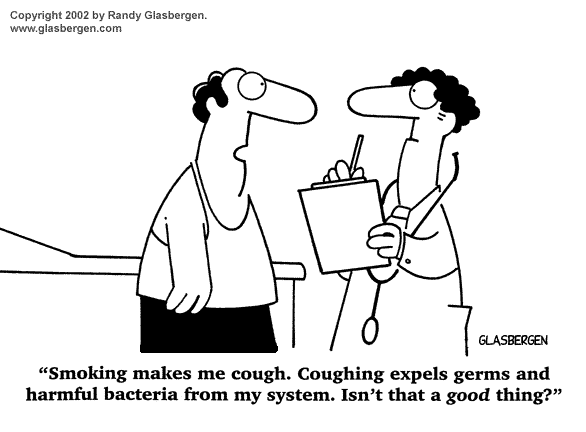Capnomania and Fumimania
Part 3 of 4
Anti-smoking Has Been a Burning Issue for More Than a Hundred Years!
- In many ways, the anti-smoking movements of the 1900’s and the 2000’s are models of restraint compared with the those that began in the 1800’s.
- Beginning with the state of Washington in 1893, no fewer than 14 states outlawed the sale, manufacture, possession, advertising and/or use of cigarettes, aka “coffin nails, little white slavers, dope sticks, paper pills, brain capsules, coffin pills, and devil’s kindling wood.”
- At least 21 other states and territories considered cigarette prohibition.
- Congress was asked to protect the public health by requiring that cigarette packages be stamped with a skull and crossbones, and labeled “Poison!”
- Many employers refused to hire cigarette smokers.
- Nonsmokers said their health was being jeopardized by “secondhand smoke”.
- When U.S. Surgeon General C. Everett Koop declared in May, 1988, that cigarettes were as addictive as cocaine and heroin, he was echoing sentiments that had been expressed more than a hundred years earlier.
- As the author of one antitobacco tract put it in 1877, “So powerful are the charms of this foul narcotic that health and long life are sacrificed to it by millions”.
- The New York Times reflected prevailing attitudes when it editorialized in 1884 that the “decadence of Spain began when the Spaniards adopted cigarettes and if this pernicious practice obtains among adult Americans the ruin of the Republic is close at hand.”
Life Has Never Been Easy on Tobacco Road.
- The state legislators who passed anticigarette laws in the late 19th and early 20th centuries were members of a large fraternity of kings, emperors, popes, and potentates who have tried, at various times and in various ways, to wean their constituents from Lady Nicotine.
- The first recorded legal proceeding against a smoker was initiated on ecclesiastical grounds in the 15th century.
- King James I considered tobacco and papism to be among the biggest evils facing his realm.
- Several popes agreed with him, at least on the first point.
- Pope Innocent X and Pope Urban VIII excommunicated smokers from the Church.
Excommunication Was the Least of a Smoker’s Worries in the 17th Century.
- In China, an imperial edict issued in 1638 made the use of distribution of tobacco a crime punishable by depapitation.
- Sultan Ahmed I of Turkey reportedly ordered the noses of smokers to be pierced with pipestems.
- His son and eventual successor, Murad IV, took an even harder line: he had smokers executed as infidels.
- In Russia, smokers were flogged (beaten); the nostrils of repeat offenders were slit; persistent violatme of contact, it seemed logical that they were being protected by something in their environment.
The First Organized Antitobacco Movement in the United States Began in the 1830’s.
- It was supported largely by temperance workers, who argued that smoking dried out the mouth, creating a “morbid or diseased thirst” that could be satisfied only by the whisky jug or the brandy bottle.
- The readers of one antitobacco tract were taken on a visit to the Realm of Satan, where Prime Minister Tobacco assisted King Alcohol in evil deeds.
- Tobacco was characterized as “unnatural, unclean, unwholesome, unrefined, unattractive, ungentlemanly, and messy.”
 Used with special permission from the cartoonist, Randy Glasbergen.
Used with special permission from the cartoonist, Randy Glasbergen.
Tobacco had its defenders.
- Many writers, both physicians and laymen, recommended smoking for health.
- Belief in the healing power of tobacco dates back to the 16th century.
- Since native Americans enjoyed uncommonly good health compared with Europeans at the tilme of contact, it seemed logical that they were being protected by something in their environment.
- Although the luster of tobacco as a panacea faded in the 18th century, it continued to be included in the materia medica until well into the 20th century.
- Many Victorian physicians believed that the heated smoke of a cigarette, pipe, or cigar would kill germs.
- Both the popular and the scientific press of that time carried periodic reports about the effectiveness of smoking as a disinfectant and prophylactic (a drug or agent that prevents the development of a disease; from Greek prophulassein, “to keep guard in front of”; from phulassein, “to guard”).
The Anti-tobacco Campaign Lost Its Momentum in the U.S. During the Mid-1850’s.
- The growing conflict over slavery overshadowed other social issues.
- With the outbreak of the Civil War, the crusade vanished almost entirely from public view.
- By the 1880’s, however, antismoking forces had regrouped, in response to the threat posed by a new enemy: the cigarette.
- Cigarettes of sorts date back to the Aztecs and the Maya, who smoked tobacco in hollow reeds, cornhusks, leaves, or, less commonly, paper.
- A prototype was first seen by Europeans in Mexico in 1518.
- Cigarettes were common enough by 1864 to be taxed for the first time.
- Still, they were slow to catch on as indicated by tax records.
- After decades of condemnation and renewed interest in smoking, the release of the 1988 Surgeon General’s Report on Smoking and Health, equating cigarettes with heroin and opium, brought the anti-smoking movement back into prominence.
—The excerpts on this page came from “In the 1800s, antismoking was a burning issue” by Cassandra Tate as seen in the July, 1989, issue of the Smithsonian.
End of Part 3 of 4
|
